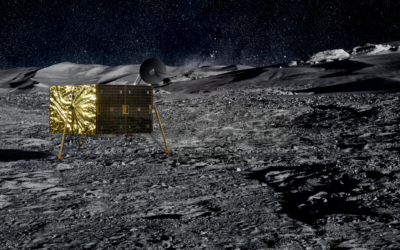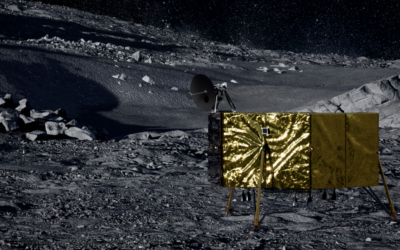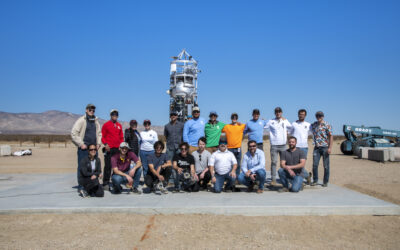Our upcoming mission to the lunar south pole will be the first of many Masten missions to the Moon and beyond! But we’re not just building the ride with our line of lunar landers. We also have a lot of mission-enabling technologies in the works to enable sustainable access and utilization of the Moon. Here’s an exclusive look at some of those technologies.
Autonomous Retargeting and Landing Software
Every second counts when you’re landing on the Moon. From 240,000 miles away you can’t operate the craft in real time because of communication delays. So we built our software to make decisions on its own during the landing sequence — determining where to land, when to throttle down, or when to abort.
Lunar “GPS”
Unfortunately, Google Maps doesn’t work on the Moon. In fact, we can’t rely on the Global Positioning System (GPS) for wayfinding on the lunar surface. Our new lunar Position, Navigation, and Timing solution proposes to fix that with surface-based sensors. This lunar “GPS-like” system will help landers, commercial payloads, rovers — and eventually humans — navigate the lunar surface. Get more details here.
NITE System
The Moon is cold… like really cold, so we need to bundle up. On missions to the far side of the Moon and in permanently shadowed regions, temperatures can reach below -232°C (or -387°F) making spacecraft operations nearly impossible. Our Nighttime Integrated Thermal and Electricity (NITE™) system is a way to keep landers and rovers warm on the surface of the Moon using a chemical reaction to generate heat. NITE is lighter, safer, and more robust than other lunar warming systems. Learn more here.
PermiAM (Porous Additive Manufacturing)
It might surprise you, but we’re in the weight loss business! With our partners Elementum 3D, we’re developing 3D-printing technology to make rocket parts with 50-70% weight savings. The PermiAM process lets us make these essential components more porous, and therefore lighter weight, without sacrificing strength and stiffness. Read more here.
FAST Lunar Landing Pads
Wouldn’t it be cool to make your own landing pad as you touch down on the Moon? We thought so too. So that’s what we’re going to do. Masten’s in-Flight Alumina Spray Technique (FAST) process creates ‘instant landing pads’ by injecting engineered particles into the rocket plume and building up a coating over the regolith. Besides being really cool, FAST will also protect your lunar mission and any nearby infrastructure from harmful lunar dust. Learn more here.
Rocket Mining System
Once we establish regular access to the Moon, we’ll need water to stay on the Moon. Our new method for a Rocket Mining System will allow us to extract lunar ice and volatiles located at the Moon’s polar and permanently shadowed regions. The coolest part? The system uses a series of rocket plumes to fluidize the ice regolith by exposing it to direct convective heating. Get all the details here.
Next-Gen Hypergolic Propellant
Let’s face it, we don’t have time to clear the building every time we want to load propellant. We’ve got too much work to do. Besides not having to suit up in SCAPE gear every time we fill the tanks, our next generation hypergolic propellants have higher volume-specific performance, and provide the ignition reliability and repeatability of traditional hypergols.
Plume Impingement Testing
We’re not going all the way to the Moon to let a rocket plume-induced dust storm ruin the party. So, we needed a way to test what would happen when our rocket plumes encounter lunar regolith. With our partners at UCF, our Plume Impingement Testing program was able to model these effects and give us a heads up for what we’ll be dealing with when we land.
Book your ride to the Moon. Ad Lunam!


